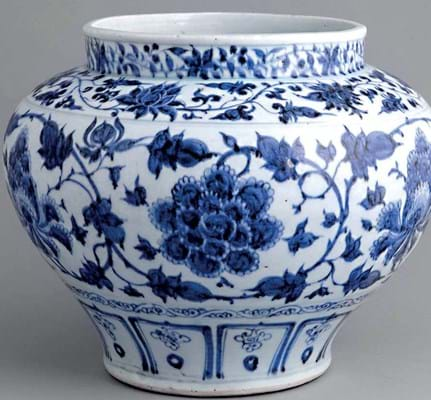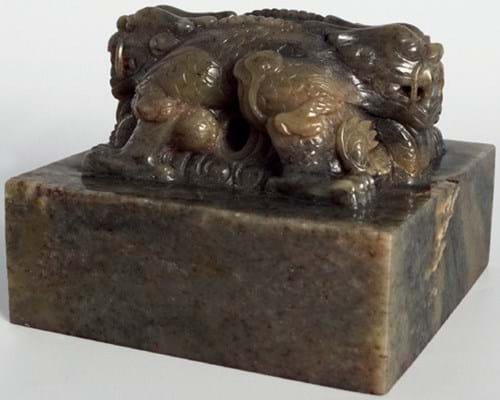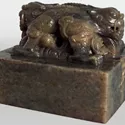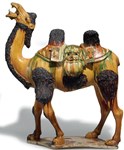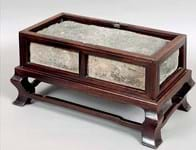Leading the sale in the capital was a Yuan (1279- 1368) ‘peony’ jar or guan. A textbook example of mid-14th century Chinese porcelain, its principal underglaze blue scheme comprises alternating lotus and peony blooms, while around its neck (where more usually a wave band might be expected) there twines a thin floral scroll. A similar 14in (35cm) diameter jar was sold by Sotheby’s London in May 2011 for £250,000.
This example – bearing a trade label of L Michiels, Antiquitiés, Bruxelles – took €240,000 (£218,000) against hopes of €30,000- 50,000.
Against similar expectations, a large 5½in (13cm) square Qing spinach/grey jade seal with a double dragon surmount sold for €280,000 (£254,500) to a Taiwanese buyer at Sheppards. The inscription was not deciphered but it came by descent from a family member who had bought it at the contents sale of Castlewellan Castle, Co Down (home to the Annesley family), in 1964.
The auction house has history in this field. In 2012, it sold a white jade dragon seal for a house record €630,000, while in May 2015, a celadon double-gourd shaped seal used to stamp documents in the San Xi Tang (the Hall of the Three Rarities) sold for €260,000. Both had been consigned by the same French client.


